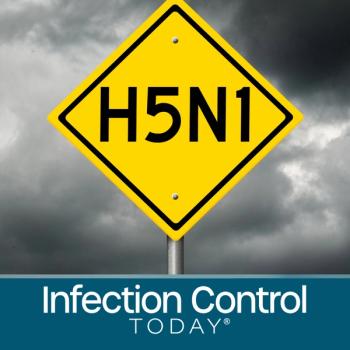
National Quality Forum Endorses Healthcare Safety Practices, Achieves Consensus on List of 26 Practices to Reduce Adverse Events
WASHINGTON -- The National Quality Forum (NQF) today announced that it had approved 26 "safe practices" that should be universally utilized in applicable healthcare settings to reduce the risk of harm resulting from processes, systems, or environments of care; 4 additional practices will continue to be evaluated and may be approved in the coming months.
Adverse healthcare events are a leading cause of death and injury in the United States, even though well-documented methods are available that could prevent the occurrence of such events. The report identifies 26 safe practices in five specific categories: promoting a culture of safety; matching healthcare needs with service delivery capabilities; facilitating information transfer and clear communication; adopting safe practices in specific clinical settings or for specific processes of care; and increasing safe medication use.
The report also identifies 27 practices that have great promise for reducing adverse events and should have high priority for further research.
The National Quality Forum's 26 Safe Practices are as follows:
1. Create a healthcare culture of safety.
2. Specify an explicit protocol to be used to ensure an adequate
level of nursing based on the institution's usual patient mix
and the experience and training of its nursing staff.
3. Verbal orders should be recorded whenever possible and
immediately read back to the prescriber -- i.e., a healthcare
provider receiving a verbal order should read or repeat back
the information that the prescriber conveys in order to verify
the accuracy of what was heard.
4. Use only standardized abbreviations and dose designations.
5. Patient care summaries or other similar records should not be
prepared from memory.
6. Ask each patient or legal surrogate to recount what he or she
has been told during the informed consent discussion.
7. Ensure that written documentation of the patient's preference
for life-sustaining treatments is prominently displayed in his
or her chart.
8. Implement a computerized prescriber order entry system.
9. Implement a standardized protocol to prevent the mislabeling
of radiographs.
10. Implement standardized protocols to prevent the occurrence of
wrong-site procedures or wrong-patient procedures.
11. Evaluate each patient undergoing elective surgery for risk of
an acute ischemic cardiac event during surgery, and provide
prophylactic treatment with beta-blockers to high-risk
patients.
12. Evaluate each patient, upon admission, and regularly thereafter, for
the risk of developing pressure ulcers. This evaluation should be
repeated at regular intervals during care. Clinically appropriate
preventive methods should be implemented consequent to the evaluation.
13. Evaluate each patient, upon admission, and periodically thereafter,
for the risk of developing deep vein thrombosis (DVT)/venous
thromboembolism (VTE). Utilize clinically appropriate methods to
prevent DVT/VTE.
14. Utilize dedicated anti-thrombotic (anti-coagulation) services that
facilitate coordinated care management.
15. Upon admission, and periodically thereafter, evaluate each patient for
the risk of aspiration.
16. Rigorously adhere to effective methods of preventing central venous
catheter-associated blood stream infections.
17. Evaluate each pre-operative patient in light of his or her planned
surgical procedure for the risk of surgical site infection, and
implement appropriate antibiotic prophylaxis and other preventive
measures based on that evaluation.
18. Utilize validated protocols to evaluate patients who are at risk for
contrast media-induced renal failure, and utilize a clinically
appropriate method for reducing risk of renal injury based on the
patient's kidney function evaluation.
19. Evaluate each patient upon admission, and periodically thereafter, for
risk of malnutrition. Employ clinically appropriate strategies to
prevent malnutrition.
20. Whenever a pneumatic tourniquet is used, evaluate the patient for the
risk of an ischemic and/or thrombotic complication, and utilize
appropriate prophylactic measures.
21. Decontaminate hands with either a hygienic hand rub or by washing with
a disinfectant soap prior to and after direct contact with the patient
or objects immediately around the patient.
22. Vaccinate healthcare workers against influenza to protect both them
and patients from influenza.
23. Keep workspaces where medications are prepared clean, orderly, well
lit, and free of clutter, distraction, and noise.
24. Standardize the methods for labeling, packaging, and storing
medications.
25. Identify all "high alert" drugs (e.g., intravenous adrenergic agonists
and antagonists, chemotherapy, anticoagulants and antithrombotics,
concentrated parenteral electrolytes, general anesthetics,
neuromuscular blockers, insulin and oral hypoglycemics, narcotics and
opiates).
26. Dispense medications in unit-dose or, when appropriate, unit-of-use
form, whenever possible.
This work was funded, in part, by the Agency for Healthcare Research and Quality, Centers for Medicare and Medicaid Services, Robert Wood Johnson Foundation, California HealthCare Foundation, Horace W. Goldsmith Foundation, Department of Veterans Affairs, United Hospital Fund of New York, and U.S. Office of Personnel Management.
A private, non-profit public benefit corporation, the NQF was created in 1999 in response to the need to develop and implement a national strategy for healthcare quality measurement and reporting. Established as a unique public- private partnership, the NQF has broad participation from nearly 170 organizations who represent all sectors of the healthcare industry, including consumers, employers, insurers, healthcare providers and other critical stakeholders.
Source: National Quality Forum
Newsletter
Stay prepared and protected with Infection Control Today's newsletter, delivering essential updates, best practices, and expert insights for infection preventionists.






